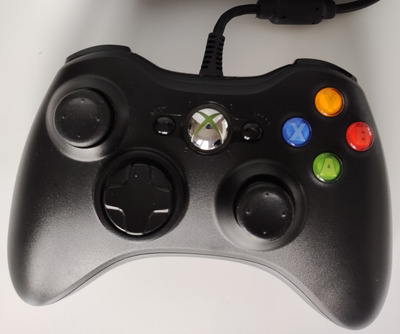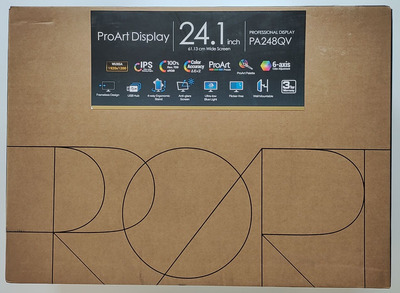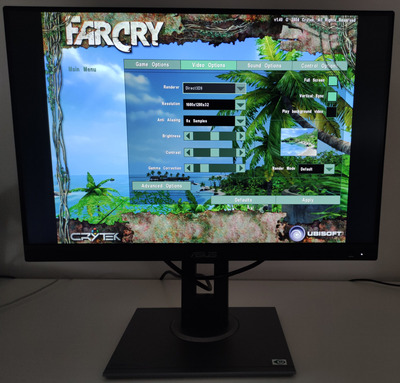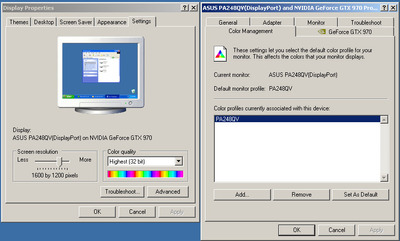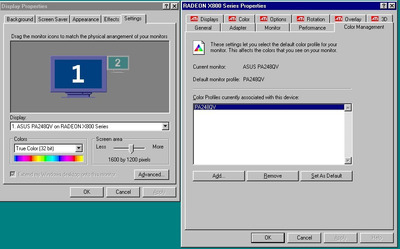Mini review: ASUS ProArt PA248QV monitor
For reference, this is a 24.1" widescreen monitor (16:10) which is still sold brand new in stores, at the time of this writing. It has a native resolution of 1920x1200, but it can enforce a 4:3 aspect ratio when using the 1600x1200 resolution, without being dependent on any GPU driver scaling options. This works fine whether you're using a HDMI, Display Port or VGA connection. Note that 1600x1200 is an officially supported resolution, which is listed in the monitor's manual. This means that it is properly exposed to Windows and can be used out of the box. I'm mentioning this because some other 16:10 monitors do not officially support 1600x1200 and you need to manually create it as a custom resolution, which is driver and GPU dependent. BTW, while this monitor only officially supports Windows 7 and up, with a slight INF file modification, the drivers can be installed under WinXP and Win9x as well.
One of the highlights of the ProArt is its professional color calibration. I dare say, this is the first time ever that I bought a new monitor where I didn't feel the need to adjust any of the settings manually. The picture was great out of the box, and I just left everything at default values. The colors are vibrant, the image is sharp, and the response time is pretty decent (5ms gtg) especially for retro gaming purposes. It supports refresh rates up to 75Hz, but I keep it at 60Hz because some WinXP era games like Star Wars: KOTOR expect that, and have physics issues with higher values.
The monitor has Display Port, HDMI and VGA connectors on the back (one of each) as well as headphone, audio and USB 3.0 ports. The USB passthrough is kinda neat if you want to connect your keyboard, mouse or a wired gamepad without creating too much cable clutter. Inside the box, you get Display Port, HDMI and USB 3.0 cables, along with a power cord. No brick adapter or anything, just your standard PC power cable. I like the adjustable stand, which goes up to 130mm in height. The hole in the center makes cable management easy. With this stand, you can also swivel, tilt or even pivot the monitor if you like. The ProArt also has built-in 2W speakers, but I haven't used them since I have a dedicated 5.1 surround sound speaker setup.
Upscaling from lower resolutions works fairly well. This is especially true when using 800x600 which gets a clean 2x upscale on each axis. You can also adjust the sharpness, even when using digital connections like HDMI or Display Port. This can help to fine tune the upscaled image to your liking. Unfortunately, this monitor does not allow for aspect ratio correction when displaying the 320x200 resolution, which is what most DOS games use. Therefore, such games will always be stretched to full screen, so I don't recommend this monitor for DOS gaming.
In summary, this is an excellent monitor for Win9x and WinXP retro gaming when using the 1600x1200 or 800x600 resolutions. And some later WinXP titles even support its native 1920x1200 widescreen resolution, which looks great as well. For me, the excellent color calibration and decent response time make the ProArt a much better choice than any of the period-correct LCD monitors from the mid 2000s. It's a great fit for a high-end retro gaming setup.
